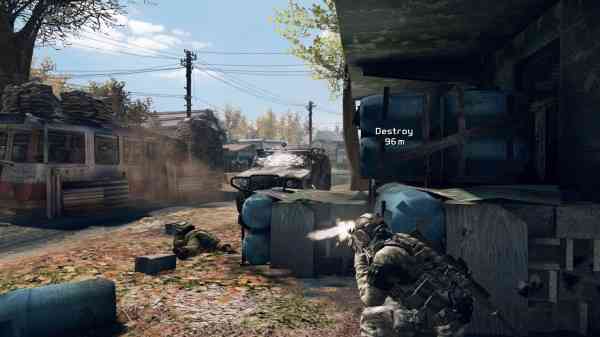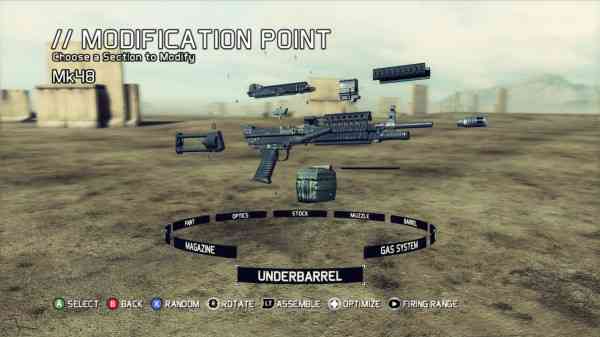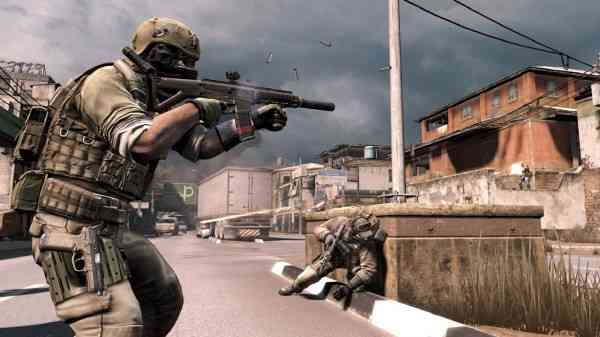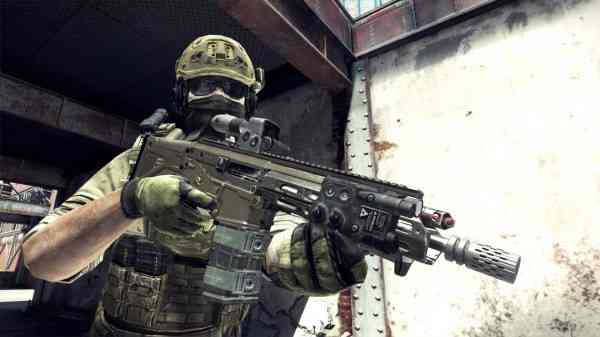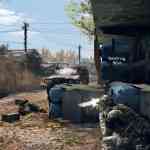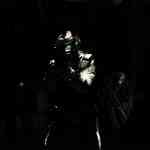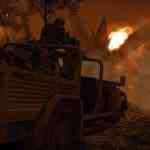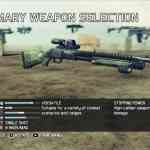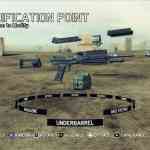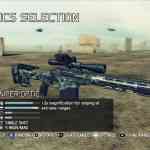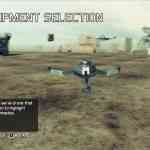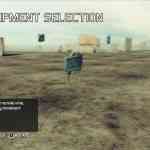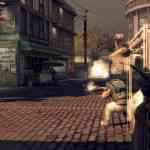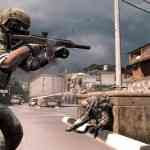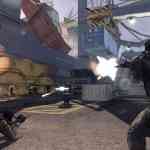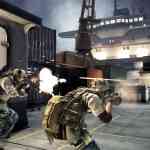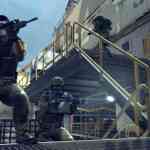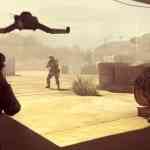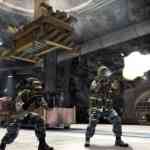The last time Tom Clancy’s tactical shooter Ghost Recon arrived on the Xbox 360 it was back in 2007 with Ghost Recon: Advanced Warfighter 2 (GRAW 2). At the time, I absolutely loved the game and I logged in countless numbers of hours with several now COG community members as we made our way across the virtual streets of Mexico taking down rebel insurgents. Well, it has been five long years and finally the popular tactical shooter series has come back with Ghost Recon: Future Soldier. This is the third Ghost Recon game we have seen on the Xbox 360 and has arrived with a considerable amount of hoopla. Does it live up its name and deliver a stellar experience much like we saw from previous Ghost Recon games? In my opinion, it absolutely does; however, I still have a few concerns despite my high praise.
Before I get into the nuts and bolts of the game, I will save many Tom Clancy fans from the suspense as you will all be relieved to know that Ghost Recon: Future Soldier remains a tactical shooter. Running and gunning will only lead to your quick demise. It also remains a squad-based tactical shooter that truly shines when playing with your friends. While playing alone is enjoyable, playing alongside a buddy is simply a blast. Ghost Recon: Future Soldier is game that has nailed the co-op experience, plain and simple. Over the course of the past week, I had the opportunity to play with another staffer and I do not think I have had this much fun playing co-op in quite some time.
In terms of what you get out of the box, Ghost Recon: Future Soldier includes a single player story campaign where you make your way through 12-missions over 12-locales from the dusty terrains of Africa to the icy climates of the frigid and icy Russian border. You also get a deep co-op campaign where you can tackle all 12-campaign missions with up to three friends, Guerilla mode, which allows you to play cooperatively, online or split screen, in a Gears of War’s horde like mode, and there is also a deep multiplayer adversarial experience where up to 12-players can play six-on-six. There are four multiplayer modes in all and it also features an XP system. Last but not least, Ghost Recon: Future Soldier features a Gunsmith Mode for weapon customization. Needless to say there is plenty to offer with this Ghost Recon game, and remarkably the entire experience comes on one disk.
As far as the story is concerned, Ghost Recon: Future Soldier takes place in the near future and starts out with you taking control of a nameless squad of Ghosts. Just after you and your squadmates take out a group of mercenaries, a bomb explodes aboard a truck that you are inspecting. Everyone is killed and new Ghosts are called into action. Scott Mitchell from the previous Ghost Recon games returns and meets you and the Ghosts briefing you on your mission. And so your adventure begins as you and the other Ghosts embark on a journey to track down the source of the dirty bomb from one locale to the next. Overall, the narrative is solid but it is nothing incredibly original or riveting. There is no question the storyline has a “been there and done that” feel to it. Honestly, I wasn’t all that interested in the story but I was pleased to see the return of Scott Mitchell and the interaction between some of the characters was mildly entertaining. Some of these charactes also return from previous Ghost Recon games too. If you haven’t played many shooters, or perhaps you are a die-hard Tom Clancy fan, then the story may very well captivate you. When playing cooperatively you also go through the story as you would the single player campaign so all those playing will enjoy the narrative as it plays out.
In terms of the single player gameplay, like I suggested above, it is all about tactical warfare. Sprinting into the battlefield and blasting away will get you killed, and I found this out the hard way far too often in the game. The developers tell us the single player experience should take 12-hours; however, given the way I played the game it took me closer to 15-hours to complete it. Needless to say, you really have to take your time while using all the tactical styles of combat and tools at your disposal. For instance, you will need to take advantage of your “Optical Camouflage” where you can move through hot spots undetected by the enemy. Stand up, fire your weapon, or running will result in detection by the enemy and will render your camouflage useless. By simply pressing the “B” button your player will crouch activating the camouflage. The whole effect of activating it is pretty cool, but above all else it is a critical tool throughout your Ghost Recon: Future Soldier experience. You will also use such tactics as the “sync shot”, where you tag enemies with your HUD and synchronize your teams fire at multiple enemies. You can also “cover swap”, which is a unique cover system that allows you stay in cover and move from point to point as you flank, surprise, and eliminate enemies. These features are all paramount in your gameplay experience.
Ghost Recon: Future Soldier also has many gadgets and ‘tools’ that you can take advantage of in the game. For instance, you will make plenty use of your drone (both air and ground based). The drone can tag enemies and infiltrate specific areas. In one sequence my co-op partner and I were playing I had to navigate the drone down to a balcony by flying it, then I had to drive it into a meeting room to unleash a sonic pulse that stunned the enemies and allowed our team to fast rope into the room and kill those we had too. Your drone is not your only gadget or ‘tool’ at your disposal though. In another level you will use the mech-like “Warhound” and use its’ mortar weapons and guided missiles to advance through the level. There are also sequences where you will man a helicopter turret, jeep turret, or stand-alone turret where while capturing or defending certain areas within a set period of time. Needless to say, I was impressed with the game’s variety and the many ways in which you can tactfully take down the enemy.
As I insinuated earlier on, the story did not capture my imagination as much as I would have liked; however it does not matter that much as it is the gameplay that will bring you back time and time again. Despite all the gadgets and variety in terms of the gameplay, nothing beats some good old fashion shooting down enemy terrorists, and the shooting feels great. Weapons pack a punch and the controls are easy to learn. Fans of the franchise will notice right away an improvement in the game’s Artificial Intelligence (AI). I found myself getting flanked quite a bit and the enemies seemed a little smarter compared to previous Ghost Recon games. You have to be patient as you wait for the enemy to pop their heads from cover and they seem to advance when you are looking the other way. Your squadmates are also more efficient killing machines compared to previous Ghost Recon games. In previous reviews of other squad-based games I have called my squadmates my ‘band of idiots’; however the same cannot be said for my Ghost Recon: Future Soldier squad. I found my squadmates communicated much more frequently, much more accurately, and were much more proficient with their weaponry. There were occasions where I was pinned down with several enemies closing in but my squadmates bailed me out in several instances.
While playing the game alone is enjoyable playing with a friend or two is truly a blast. The 4-player co-op mode is arguable the game’s best selling feature as you can play through the game’s full campaign mode from beginning to end with others. I have not had this much fun in years. Unlike other co-op shooters on the Xbox 360 which have you barrelling in from one locale to the next as you mow down everything in sight, Ghost Recon: Future Soldier forces you to communicate with your buddies and strategize your enemy take-downs on the fly. Granted, many areas involved some trial and error, and there were some sequences that took more the a few attempts, but at the end of the day it was a blast and it was the most fun I have had on a shooter in quite some time.
A much-touted feature of Ghost Recon: Future Soldier is the Gunsmith mode. This mode allows you to customise your weapons so you can have what you feel is the perfect weapon load-out for any given situation. In between missions the game gives you access to the Gunsmith mode, and tinkering with the many different possibilities is a hoot. This mode also has Kinect functionality as well so you can change and replace items using the Kinect sensors. You can chose from dozens of barrels, scopes, grips, stocks, and other attachments; you can even change the paint job on your weapon. Needless to say, I was impressed.
Ghost Recon: Future Soldier also includes a cooperative mode, separate of the campaign, called Guerrilla mode. This is a multiplayer co-op mode that acts as a horde mode of sorts. The only difference is that it is more of a tactical based mode where you enter, capture, and ultimately defend an HQ. From there you face waves of enemies. Much like the single player game, the enemy AI is smart and they will rush you if you sit back. Playing this mode alone is incredibly difficult so I highly recommend you play with a friend or two. As you progress along in the mode and earn wave streaks, you can unlock airstrikes, radar, total invisibility as well as unlock a guided missile or a defence turret. After every 10th wave you have to move on and take over another HQ. If you enjoy Gears of War’s horde mode, or any other shooter that has a similar mode, then there is no doubt you will also enjoy Guerilla mode.
In terms of Ghost Recon: Future Soldier’s adversarial online multiplayer component, once again Ubisoft delivers, but I still felt it was missing the “it factor”. Don’t get me wrong, it is good but it just does not have the same polish that Modern Warfare 3 or Battlefield 3’s online game has; however, it does have many redeeming qualities, and frankly it is a better tactical team based online experience then most. Much like the game’s single player campaign, you will not last long on your own as you need to stick with your team, watch each other’s back, and communicate often in order to be successful. Of course weapon selection and class selection also plays a significant role.
Weapons are linked to one of the three multiplayer classes (Scout, Engineer and Rifleman). The Rifleman use heavier assault rifles and LMGs and they can deliver heavy suppressive fire to pin down enemies. They also provide the core combat for any team. The Engineer uses SMGs and personal defense weapons. They excel at providing intel on enemy forces and they have multiple ways of detecting and highlighting the enemy. The Scout has access to sniper rifles as well as some SMGs. They have access to optical camouflage and are the master of stealth.
The multiplayer mode has 10-maps out of the box and supports up to 12-players. Given the size of some of the maps I was a little taken back with how few players you can get into a game. That being said, I can understand how the developers wanted to maintain a more tactical based approach by restricting the number of players you can get into a game. There are four online game modes (conflict, decoy, siege and saboteur) and I spent the bulk of my time in the Conflict mode, which is a game mode where objectives are randomly located around the map. Given the game had not launched to the public when I jumped online I was surprised by not only the level of talent but also the number of players online. Overall it was a lag free and enjoyable experience. The multiplayer aspect of the game has lots of depth and is rich in content, but if you are expecting a Call of Duty experience (e.g. run and gun) then you have come to the wrong place.
Overall, the visuals in Ghost Recon: Future Soldier are very good but by no means flawless. In terms of the negatives, I was just not all that impressed with the games cut-scenes and menus. They seem to have a dated look and the animations are just not what I have come to expect this far into the Xbox 360’s life cycle. Take a look at each character as they speak, their facial expressions and movements just seem stiff and somewhat lifeless. It is not many times I can say the in-game visuals look far superior to the game’s cut-scenes but this is the case here. As I played cooperatively with my fellow staffer we also noticed some clipping issues and some unusual instances where weapons would be floating mid-air or weapons would be morphing into players. This was not frequent, but it was noticeable when it happened.
After navigating through the menus, making it past some of the game’s opening sequences, and finally getting a chance to start the single player campaign, the visuals become a sight to behold as the environments are very detailed and look fantastic, especially in high definition. Some of the scenes in the dusty African villages look fantastic. The blowing sand effects are bang-on and the games lighting effects are equally as stunning. Of course the rest of the levels are just as detailed and amazing to look at. Kudos to the dev-teams for doing such a great job in this area.
In terms of the game’s character designs, the in-game player models look incredibly life-like. The detail is impressive and the way the characters move in realistic manners is notable. It is certainly the best looking set of characters we have seen from the Ghost Recon series to date. Even when the players have optical camouflage activated, nothing is lost is terms of their overall look and movements. Needless to say I was very impressed as was the rest of the COG crew who played the game with me over the past weekend. I was also impressed with the look of the weapons which also look incredibly life-like. The amount of weapon customization in the game is endless and the level of detail that goes into even the minor little add-ons is noticeable and brilliant.
As far as the sound is concerned, Ghost Recon: Future Soldier’s audio is an excellent complement to the game’s graphics. The distinctive sounds of such things as the weapons, soundtrack, explosions and character voices are all great and sound even better in 5.1 surround sound. Once again Ubisoft sets the standard in the weapon soundsdepartment as each weapon sounds realistic and seems to mirror what a real-life high-powered machine gun would sound like. It was pretty amazing that all of the guns, exploding grenades, sensor grenades, and rockets all sound as great as they do. You can tell a lot of time and effort was spent attempting to perfect the sounds effects to bring even more realism into the game.
The soundtrack is also very good and sets the perfect mood. Sure, it certainly has a Call of Duty familiarity to it, and it can be a little overly dramatic at times; however, it does add to the realism and atmosphere, and it certainly gives you that Tom Clancy shooter experience. The voiceovers in the game are not to bad but nothing is magnificent in this regard. It just seemed like some of the voice work took away from some of the realism. This being said, the voices in the game are clear, including the chatter that your squadmates make throughout each level. In some sense, that is really all I ever ask.
At the end of the day, Ghost Recon: Future Soldier is a terrific addition to the Ghost Recon franchise and does the Tom Clancy name proud by delivering a futuristic tactical shooter experience unlike we have seen on the Xbox 360 to date. The in-game visuals are solid, the sound is just as good, and the single player, cooperative and adversarial multiplayer gameplay modes make Ghost Recon: Future Soldier a must buy for not only fans of the franchise but for anyone looking for a deep tactical shooter to play well into the summer. Now if you excuse me, I have some cooperative missions to go play again.
